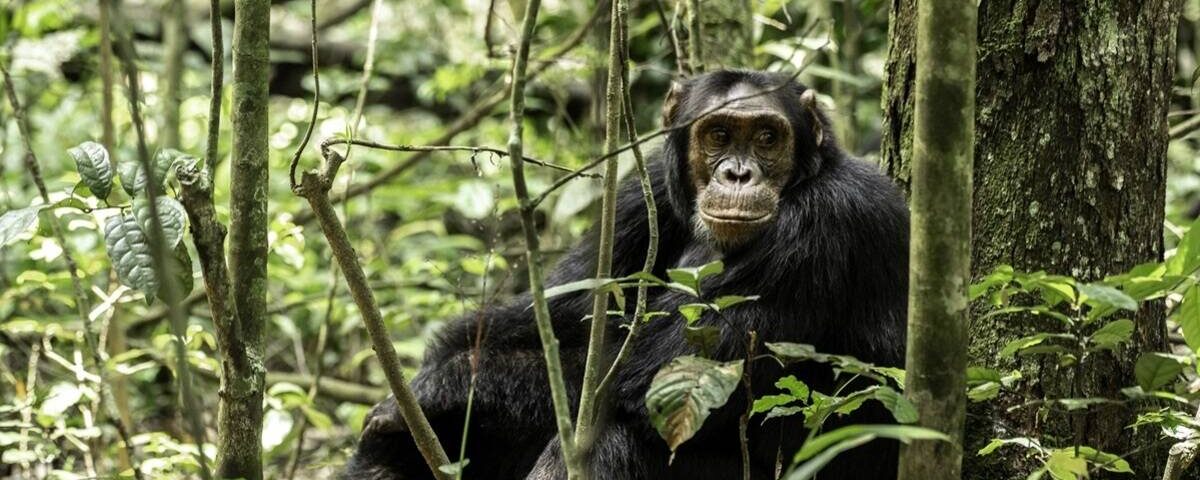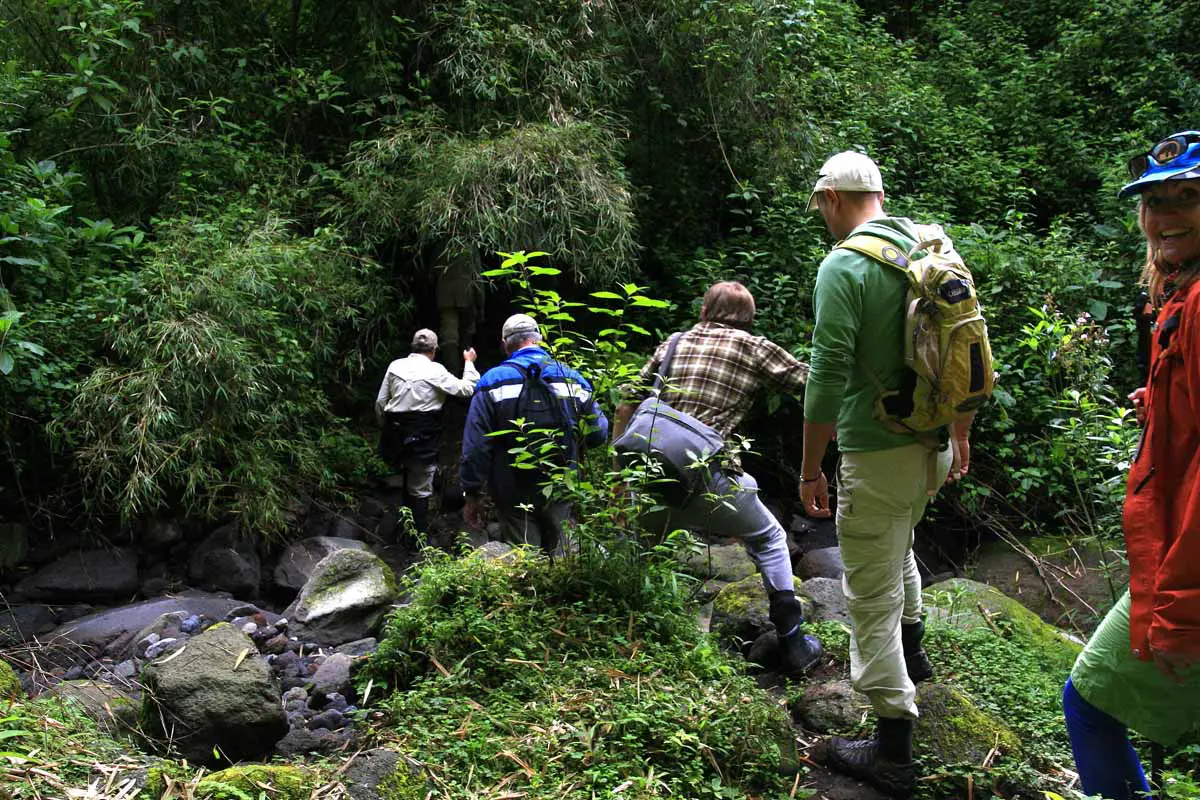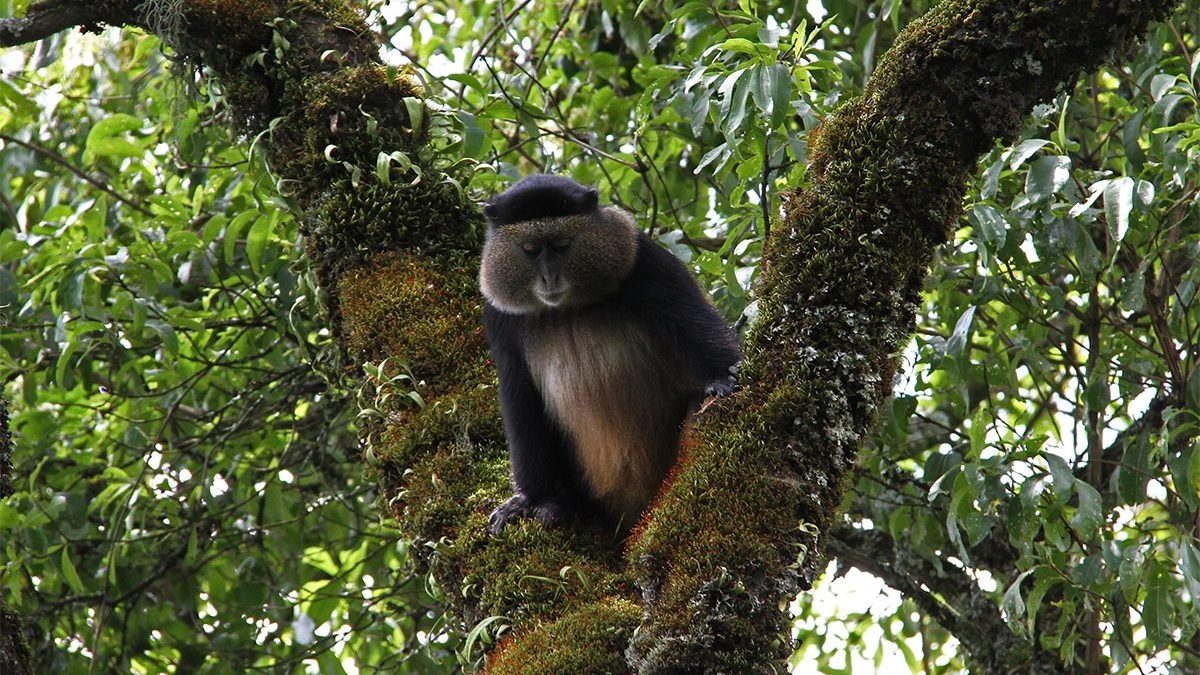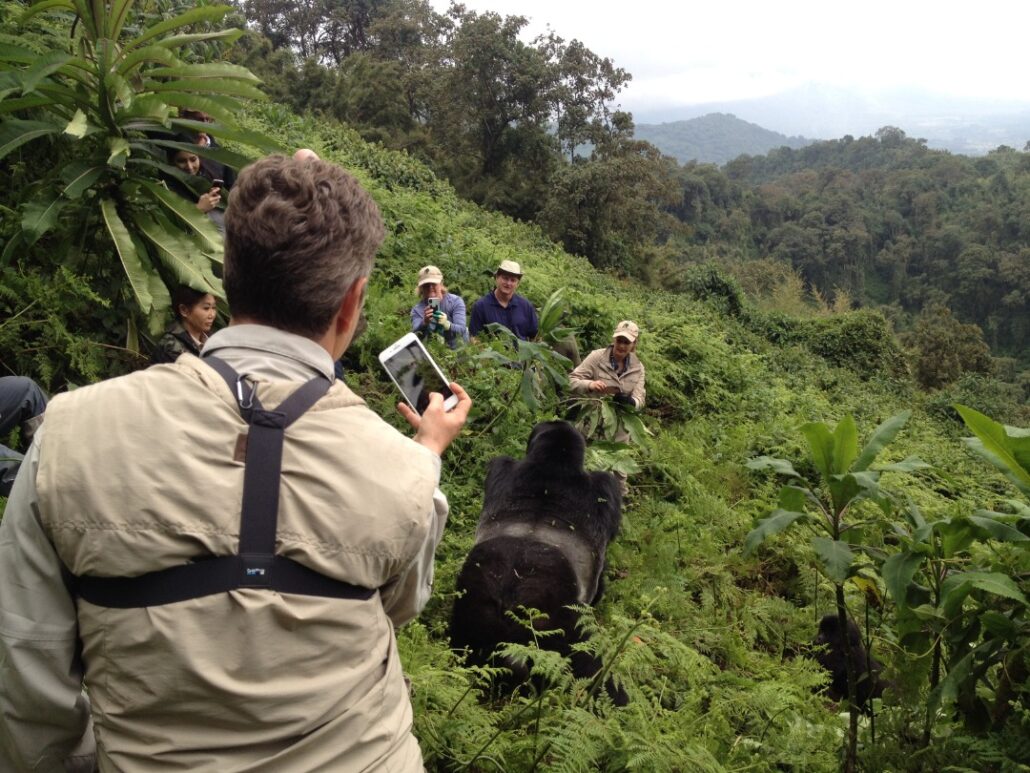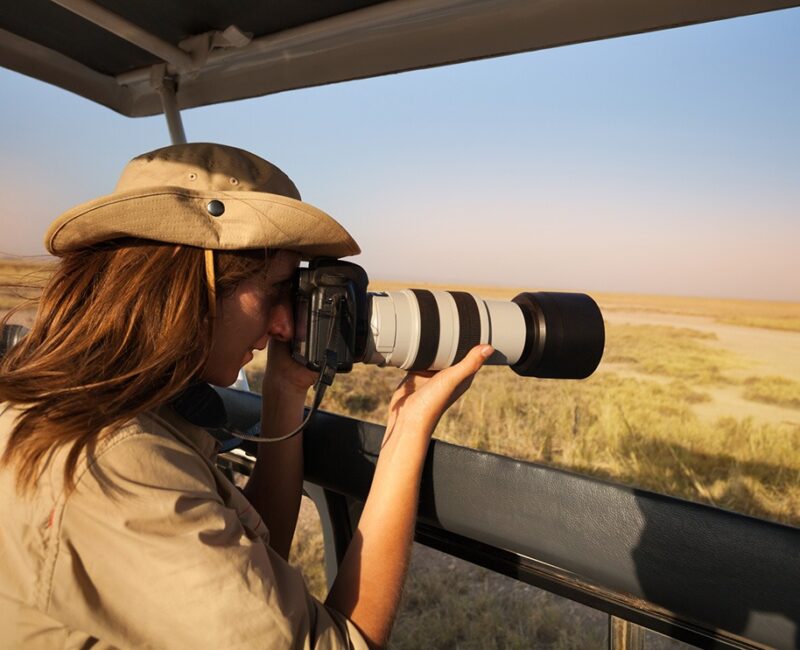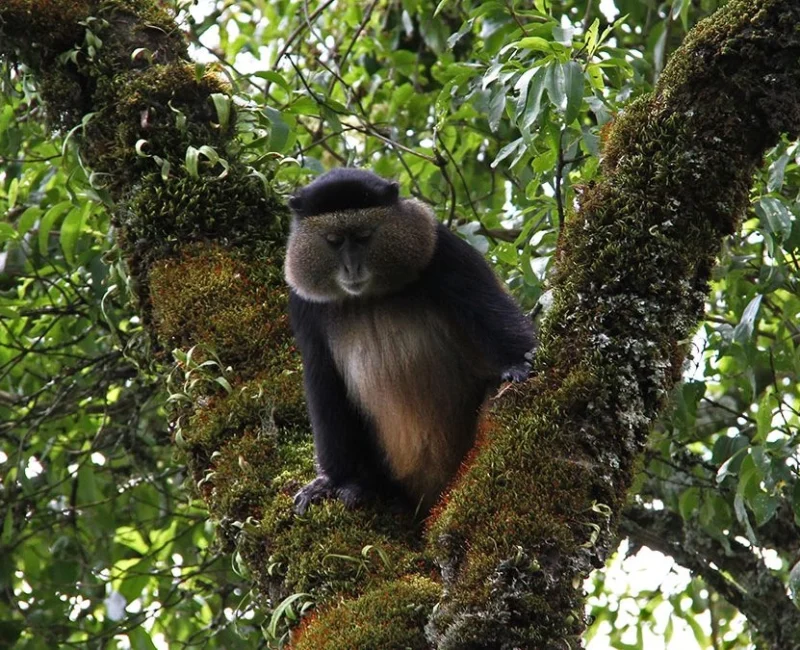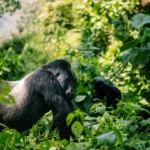
The Safety Of Gorilla Trekking In Uganda
September 24, 2025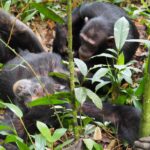
Wildlife Corridors & Primate Migration in Uganda
September 24, 2025How Climate & Season Affect Primates’ Behavior and Viewing
Uganda is one of the world’s greatest destinations for primate tourism. Known as the “Pearl of Africa,” the country offers incredible opportunities for Uganda Gorilla Trekking, Uganda Gorilla Safaris, and Uganda Wildlife Safaris that attract thousands of travelers each year. In places like Bwindi Impenetrable National Park and Kibale Forest National Park, visitors can witness mountain gorillas, chimpanzees, and other primates thriving in their natural environments. However, few travelers consider how climate and seasonal changes influence primates’ daily lives and, consequently, their safari experience. Understanding these environmental influences allows travelers to better prepare for Uganda Safaris Holidays while also appreciating the challenges primates face in an era of climate change.
Primates, much like humans, live in constant interaction with their environment. Temperature, rainfall, and seasonal resource availability strongly affect their behaviors, ranging from feeding habits to social interactions. Tourists who engage in Uganda Tours during different seasons often notice how the same primate species may behave differently depending on environmental conditions. From resting under the canopy to avoid mid-day heat to foraging across larger territories during food-scarce months, primates adapt to survive and thrive. For those planning a Uganda Safari Holiday, knowing how climate impacts primates enhances not only your viewing opportunities but also your appreciation for the delicate balance of wildlife and ecosystems.
In this article, we will explore how climate and season shape primate behavior and influence wildlife viewing during Uganda Safaris. We will also discuss the broader implications of climate change for primates, practical advice for safari-goers, and how cultural experiences around safari lodges can enrich your Uganda Holidays.
How Seasonal Changes Shape Primate Behavior
One of the most noticeable influences on primates is the alternation between wet and dry seasons. Uganda experiences two main rainy seasons—March to May and September to November—while the drier months fall between December to February and June to August. These seasonal cycles affect vegetation growth, fruiting patterns, and water availability, all of which directly determine primates’ feeding and movement patterns.
During wetter months, food sources such as fruits, leaves, and flowers become abundant. For gorillas in Bwindi, this abundance means less energy spent searching for food and more time devoted to social interactions, grooming, and raising infants. On Uganda Gorilla Safaris during these seasons, tourists often observe vibrant activity within gorilla families. By contrast, during drier months when food is scarcer, gorillas and chimpanzees may travel longer distances in search of sustenance. This shift in activity often results in more challenging treks for Uganda Gorilla Trekking enthusiasts but also offers unique opportunities to witness primates’ resilience.
Chimpanzees in Kibale Forest display remarkable adaptability to seasonal shifts. When fruit availability declines, they diversify their diet to include bark, seeds, and even small animals. This flexibility highlights their intelligence and survival strategies, but it also means that Uganda Wildlife Tours during dry months may reveal more complex and unpredictable chimpanzee behaviors. For visitors, such experiences showcase the fascinating link between seasonal ecology and primate life.
Seasonal changes also affect where primates choose to spend their time. In cooler rainy months, chimpanzees and monkeys may remain more active in trees, enjoying shelter and easy access to fruiting branches. However, during dry, hot months, species like chimpanzees spend more time on the ground to rest in shaded areas and conserve energy. This dynamic adaptation demonstrates how closely primates align their daily lives with seasonal cycles, creating varied and enriching encounters for those on Uganda Safaris Holidays.
Climate and Daily Activity Budgets of Primates
Climate influences not just what primates eat, but how they allocate their daily energy. Scientists often describe this as their “activity budget”—the balance between feeding, resting, moving, and socializing. For travelers seeking Uganda Safaris, observing how climate shapes these activity patterns provides a deeper understanding of primates’ lives.
During cooler mornings in the rainforest, gorillas and chimpanzees are often highly active, feeding and socializing within their family groups. Uganda Gorilla Safari participants who begin treks early in the day frequently encounter lively gorilla families playing, grooming, and vocalizing. However, as midday heat intensifies, primates conserve energy by resting under shaded vegetation or retreating to higher elevations. This thermoregulation strategy ensures they avoid overheating while preserving calories. For tourists, this means the most engaging wildlife moments often occur during early or late hours of the day.
Rainy weather further alters activity budgets. Heavy rainfall reduces primates’ willingness to travel long distances, often confining them to smaller forest areas. Although this can sometimes reduce visibility for Uganda Wildlife Safaris, it increases the chances of observing groups in one concentrated area. For example, Uganda Gorilla Trekking in rainy months may involve muddy trails, but the reward lies in spending time with a stationary family feeding on abundant vegetation. By contrast, dry seasons may involve longer treks but more dynamic sightings as primates range widely in search of food.
Social dynamics also shift in response to climate. For chimpanzees, hot weather often reduces play and grooming sessions, as individuals prioritize cooling down and conserving energy. During cooler months, however, social interactions intensify, providing richer experiences for tourists during Uganda Wildlife Tours. The balance between environmental stressors and social needs creates a fascinating window into primates’ adaptability and resilience.
How Climate Affects Primate Viewing on Uganda Safaris
For travelers, climate not only changes primates’ behavior but also shapes the safari experience itself. Understanding how weather influences viewing opportunities allows visitors to plan their Uganda Safari Holidays more effectively.
During dry seasons, trekking conditions are generally easier, as trails are less muddy and rivers more manageable to cross. This makes Uganda Gorilla Safaris more comfortable for those who prefer lighter hikes. However, the scarcity of food often pushes gorillas and chimpanzees to travel further distances, requiring trekkers to walk longer before encountering a family group. For adventurous travelers, these treks create rewarding challenges that add to the sense of accomplishment when gorillas are finally located.
In rainy months, while trails become slippery and treks more demanding, primates often stay closer to their nesting areas due to abundant food. This increases the chances of shorter trekking distances, making it an advantage for those seeking less strenuous Uganda Tours. The lush forest during these months also provides breathtaking scenery, enhancing photography opportunities for those documenting their Uganda Wildlife Safaris.
Climate also determines how active primates appear during viewing encounters. Cooler, wetter conditions encourage more playful interactions and vocalizations, offering lively viewing moments. Hot, dry conditions often lead to more resting and less visible activity. Knowing these seasonal patterns enables travelers to adjust their expectations and choose the right time of year for their Uganda Safaris Holidays, depending on whether they prioritize comfortable trekking conditions or dynamic wildlife activity.
Climate Change and Its Threats to Primate Populations
Beyond seasonal variations, long-term climate change presents serious challenges for primates in Uganda. Rising temperatures, shifting rainfall patterns, and habitat loss pose threats not only to primates’ survival but also to the sustainability of Uganda Gorilla Trekking and Uganda Wildlife Safaris.
Habitat loss due to altered climate conditions reduces the availability of key food sources for gorillas and chimpanzees. Extended droughts and irregular rainfall cycles limit fruiting seasons, forcing primates to rely on less nutritious food. Over time, this can weaken populations and reduce reproductive success. Uganda Gorilla Safaris in the future may face reduced sightings if these pressures diminish family group stability.
Climate change also increases disease risks. Both gorillas and chimpanzees are highly susceptible to human-borne illnesses, and environmental stress weakens their immune systems. This raises concerns not only for primates but also for sustainable tourism. For Uganda Wildlife Safaris to thrive, strong conservation measures are needed to minimize human impact while supporting habitat protection.
Moreover, altered climates change life-history traits, such as survival rates and reproduction cycles. For species with slow reproduction, like mountain gorillas, these disruptions have long-term implications for population stability. Without proper interventions, climate change could elevate extinction risks, undermining decades of conservation success that made Uganda Tours globally renowned.
Conservation Efforts and Responsible Tourism
Uganda has taken significant steps to ensure that primate tourism remains safe, sustainable, and beneficial for both wildlife and local communities. Strict Uganda Wildlife Authority (UWA) guidelines limit group sizes, enforce distancing rules, and require masks during Uganda Gorilla Trekking experiences. These measures protect primates from stress and disease, ensuring that Uganda Safaris Holidays maintain their high conservation standards.
Community involvement plays a central role. Many safari lodges around Bwindi and Kibale integrate cultural activities such as traditional dances, local craft markets, and village visits. Participating in these cultural experiences enriches Uganda Holidays while providing local communities with income. This strengthens conservation by ensuring that locals directly benefit from Uganda Gorilla Safaris and Uganda Wildlife Tours.
Tourists can also contribute by choosing eco-friendly lodges, hiring local porters, and respecting park regulations. By doing so, every visitor becomes part of a broader conservation mission. The success of Uganda Tours depends not only on wildlife protection but also on building trust between tourists, communities, and conservation authorities.
Cultural Experiences Around Safari Lodges
A Uganda Safari Holiday is not only about gorillas and primates. Around the lodges near Bwindi Impenetrable National Park and Kibale Forest, visitors can immerse themselves in unique cultural traditions. These experiences complement Uganda Wildlife Safaris and deepen the connection between travelers and local heritage.
For example, in Bwindi, travelers can participate in Batwa cultural encounters, where indigenous forest dwellers share their traditional knowledge of hunting, herbal medicine, and storytelling. This experience connects primate tourism with human history, showcasing how communities once coexisted with the forest. In Kibale, village walks and coffee tours allow visitors to understand rural life, from farming practices to traditional cooking. After a day of Uganda Gorilla Trekking, these cultural activities provide enriching ways to end your Uganda Tours.
Such experiences strengthen the value of Uganda Safaris Holidays by blending wildlife encounters with cultural immersion. They remind travelers that conservation is not just about primates, but also about supporting the people who live alongside them.
The Interplay of Climate, Primates and Tourism
Climate and seasonal variations profoundly shape primate behavior, from feeding patterns to social dynamics, and influence how travelers experience Uganda Gorilla Safaris. While dry seasons offer easier trekking conditions, wet seasons provide shorter treks and livelier primate interactions. Understanding these dynamics enhances Uganda Safaris Holidays, making them more rewarding and memorable.
However, climate change poses long term challenges for primates, requiring collective efforts in conservation and responsible tourism. By respecting park rules, supporting local communities, and planning Uganda Tours with awareness of seasonal variations, travelers contribute to the protection of gorillas, chimpanzees, and other primates.
Uganda Gorilla Trekking is not just a wildlife adventure. It is an opportunity to witness how climate, behavior and conservation intertwine. For those seeking unforgettable Uganda Safaris Holidays, understanding these dynamics ensures that every journey becomes both an exploration of nature and a commitment to preserving it for future generations.

